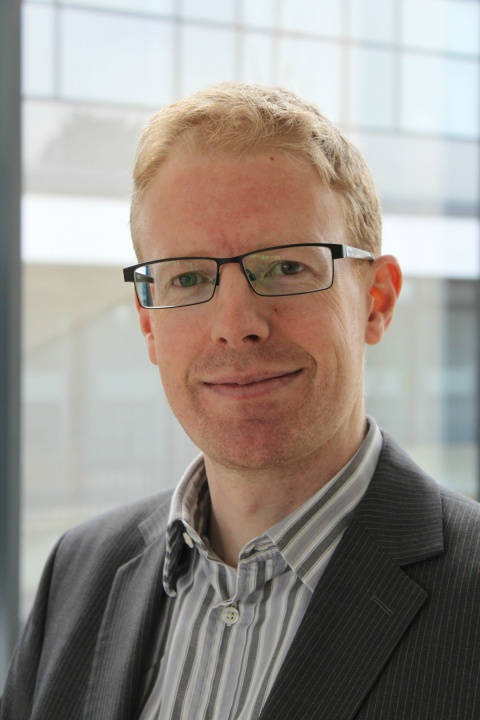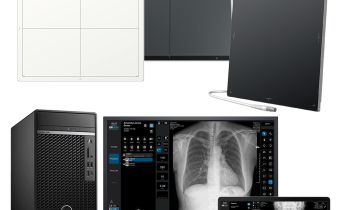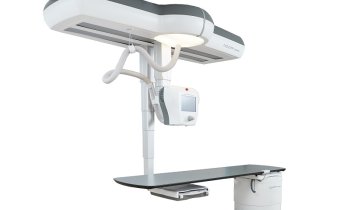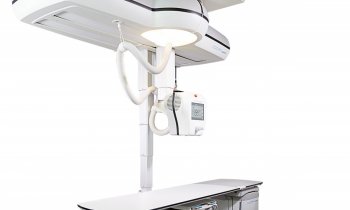Article • Education
Pivotal role in patient care for radiographers
Delivering consistent levels of education and training throughout Europe remains an important challenge as radiographers play an increasingly pivotal role in patient care and patient safety.
Report: Mark Nicholls

As the European Congress of Radiology in Vienna prepares to hold a record number of sessions for radiographers, including many focused on the evolving roles of radiographers, Dr Jonathan McNulty, vice president of the European Federation of Radiographer Societies (EFRS), believes that delivering Europe-wide levels of education, qualification and training for radiographers is critical in raising standards of care, diagnostics, therapeutics and patient safety. He acknowledged that, whilst radiographers in Europe are generally well educated, and often trained to masters or doctoral level, access to bachelor degree level training in some countries is still limited.
‘In Europe, the quality of imaging services is generally good, however, there are some discrepancies so an important body of work at European level is to try to work with radiographers, national societies and education institutions to enhance the education and training of radiographers,’ McNulty added.
ECR 2017 has a strong education and scientific program for radiographers, including a number of sessions delivered with partner organisations and, this year, ECR is recognised as the official congress the EFRS for medical imaging.
There are sessions looking at professional challenges, patient safety and refresher courses across all specialist areas of radiography.
McNulty, from the School of Medicine at University College Dublin, also stressed the importance of using the skills of radiographers to their full potential. ‘There remain issues in countries around Europe where the knowledge and skills of radiographers are somewhat under-utilised at a time when there are huge opportunities for radiographers to play a more significant role in medical imaging and radiology.’
However, while radiographers have been viewed as technicians in some nations, in others their role has advanced significantly with their increasing knowledge, experience and responsibility with some working as advanced practitioners or the equivalent of consultant radiographers.
‘It’s not just about giving more opportunities to radiographers,’ he continued, ‘but there’s a very good evidence base showing that when radiographers are used more effectively - when challenged and allowed to take more advanced roles - there can be improved patients outcomes as well, so there is a big benefit to the patient from better utilising the workforce across Europe.’
Radiographers have the key role to play
Dr Jonathan McNulty
The European Society of Radiology and EFRS have a Memorandum of Understanding as a blueprint for greater collaboration at a time that radiographers are playing these ever greater roles in radiology services.
‘Radiographers are a key piece in the jigsaw, which makes for a modern state-of-the-art diagnostic or therapeutic service being provided by radiology departments,’ he said.
‘It is essential that radiographers are the experts in terms of the technology that is at the heart of a modern radiology department and radiographers have the key role to play in optimising the use of that technology.
‘An equally essential role - that people can often overlook - is that radiographers work closely with their patients. They interact with them on a daily basis and have an important role to play in patient care and patient safety in a modern imaging department.
‘If it is an imaging modality using ionising radiation, they make sure the radiation dose to the patient is minimised. From being seen as a technician, they need to be seen as the expert in that area who can really get the most out of the technology and play that important role in patient care, patient management and in a safe way as well.’
What is also important, he added, is that radiographers – whether diagnostic or therapeutic radiographers – must work to raise the identity and profile of their profession among the public and other members of the health service.’
McNulty said a team approach and closer collaboration with other health professionals remained important in terms of achieving patient safety and the best clinical outcomes. McNulty is presenting a session, looking at the challenges in education and training and implementing the theory of patient safety into clinical practice.
He said a challenge lay in achieving agreement on the scope of patient safety within radiology.
‘A message I’d like to get across at ECR is to make people reflect more on what we are doing in our educational programmes, in clinical practice, and to identify patient safety-related deficits which may exist and what steps we might be able to take to try and address some of those areas.’
Profile:
Dr Jonathan McNulty is an Assistant Professor and Head of Subject, Radiography, in the School of Medicine, University College Dublin, Ireland where he oversees the BSc Radiography programme along with over 20 postgraduate programmes and as a University Fellow in Teaching and Academic Development, he has led University-wide educational research projects. Since 2014 he has sat on the Board of the European Federation of Radiographer Societies (EFRS) and is currently Vice-President of the EFRS. Having delivered more than 100 conference presentations and contributed to over 50 journal articles, he has held significant national and international research grants. His research interests include medical and healthcare education, optimisation and benefit-risk communication, neuroimaging and image perception.
Event information:
RC 914 - Patient safety: professional and clinical responsibility of the radiographer
Friday, March 3, 08:30 - 10:00
Room: K
Session Type: Refresher Course
Topics: Professional Issues, Radiographers
Moderators: T. Roding (Haarlem/NL), P. Due-Tønnessen (Oslo/NO)
04.03.2017










